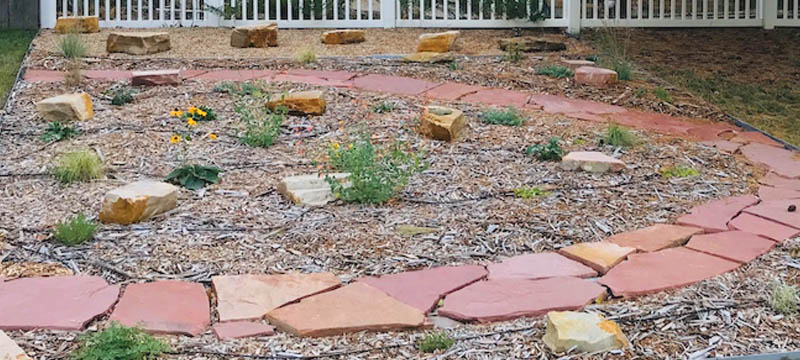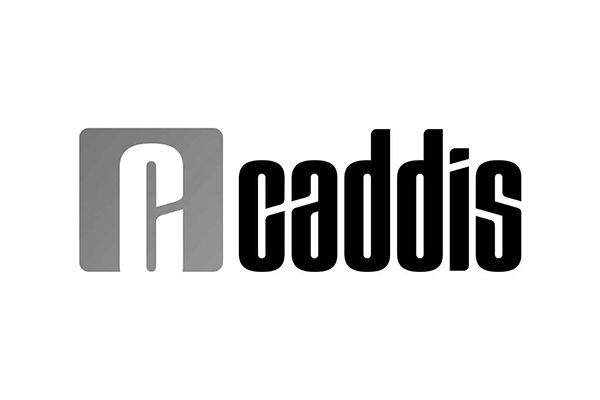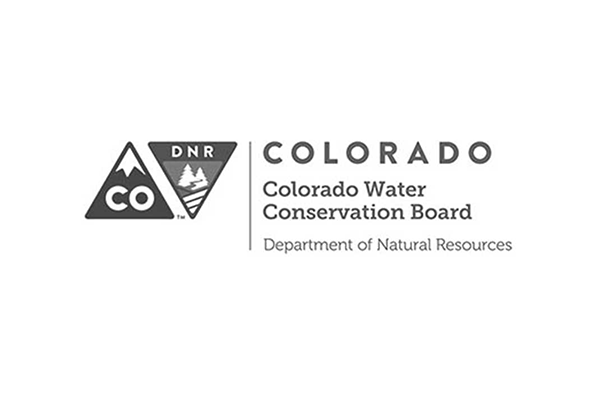So, you’ve decided to cut back on your indoor water use – by upgrading your toilet, swapping out showerheads, shutting off the faucets when brushing, and however else possible. That’s great, but Coloradans on average use about 50 percent of their water outdoors on a yearly basis.
For perspective, visualize a long trip across the American Midwest, flying over vast expanses of wheat and corn, and ask yourself – what is the irrigated crop that takes up the most acreage in the continental U.S.?
Well, it’s not wheat or corn – it’s the grass lawn, commonly known as turf. According to a 2016 study,” roughly 163,812 square kilometers of land were cultivated with some form of turf in the continental United States. This is a total land area almost the size of Wisconsin, or nearly 61 percent of the gigantic State of Colorado.
This is not to demonize turf, since in some cases it’s a useful, practical choice – think athletic fields, parks, or high-use family areas in private yards. But how much is truly necessary, and how much water can we save by using other landscaping options? A typical Colorado yard using Kentucky bluegrass needs significant irrigation to keep it looking decent during the summer months. For example: a 5,000 square-foot bluegrass lawn might use 18,500 gallons of water monthly at just one-half inch every three days. Sure, most people don’t have 5,000 square feet of grass, but many do, and simple division shows that smaller yards can guzzle copious amounts of potable water too.
Many Coloradans already know that turf needs H2O and the state’s water resources are finite, so they’re making the switch from turf to more water-friendly landscaping options. Danielle Levine of Longmont finished the first phase of her project in July of 2018, and reports that she’s happy with the results.
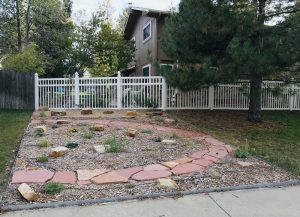
“We wanted to save water and lawn mowing effort and create pollinator habitat. Our side yard was the perfect place for this because we don’t use it for anything. It’s no good to us or to wildlife, and it’s just a pain to maintain,” she said.
Levine said that after the turf was removed, she put down cardboard for weed guard covered by mulch for the majority of the area, and planted native forbs and grasses in the mulched portion. She used pea gravel in a smaller section, and intends to plant native shrubs and privacy trees to screen the back yard from the street.
David Harrison of Boulder reported about the same reasoning as Levine for his turf reduction, but engineered a different landscaping plan.
“I decided to remove turf because I had entirely too much grass lawn for my liking. There was too much to water, too much to mow. Frankly, this year, and last, I gave up and after mid-July the lawn looked brown and toasted. It was time to replace bits with xeriscaping, so I got a ‘Garden In A Box’ (assortment of xeric plants from Resource Central) in the spring, and then another one this fall,” he said.
He planted some of the xeric plants in a planter box by the front steps, in an area he described as “hard to keep watered,” but said the plants took to the new location and look good. He then removed turf and planted a circular garden with a lilac in the middle, surrounded by low-water plants. In the fall of 2018, he removed turf next to an existing flower garden along his driveway, added some rocks, moved existing plants around, planted more xeric plants, and mulched.
While Harrison is satisfied with his new arrangement, he noted that he might have underestimated how big his first round of plants would grow, and increased his spacing between plants for the next round. Also, he said rabbits found some of his plants before he had a chance to put in fencing, and will monitor this area to see what it looks like in the spring.
“Live and learn,” he said.
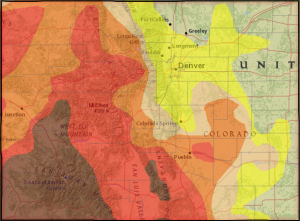
Back to the big picture for a few sentences – in 2018, much of Colorado has been in a severe drought, and so was much of the American Southwest. For example, a mid-August Denver Post story detailed impending water shortages for the Colorado River basin and eye-opening reservoir storage statistics: Lake Powell was only 49 percent full and Lake Mead was at 38 percent. Colorado precipitation fluctuates, but it hasn’t been that long since the severe drought of 2002, which contributed to an awful wildfire season and diminished water supplies. Even Captain Obvious is now on record saying we need water conservation, and thirsty turf is one of the most commonly overlooked places for savings. Let’s join the Captain, and explore some ways to reduce our outdoor water use.
Xeriscaping: Beauty with Benefits
Most Coloradans have some basic familiarity with xeriscaping, and we should be proud to know that the actual word has its roots here in Colorado. A special task force of Denver Water, Associated Landscape Contractors of Colorado, and Colorado State University coined the word – a combination of the Greek word “xeros,” which means “dry,” and landscaping.
The actual amount of water savings will vary based on the individual xeriscaping project, but various estimates suggest homeowners can save up to 60 percent of their outdoor irrigation use with proper design – sometimes even more.
The xeric plants commonly used in Colorado offer several other benefits over turf. The typical grass lawn is basically a monoculture, while the xeric plants can provide variety in both species diversity and color. Pollinators get little benefit out of the turf lawn (unless there are lots of dandelions), but they’ll love the heck out of the pollen from your flowering xeric plants. And for a little personal reward, those who grumble about mowing the lawn on weekends might also appreciate eliminating or reducing time spent on this thankless task. .
Bigger City, Bigger Picture
We’ve done some math and looked at individual motivation to remove turf. Now, let’s discuss multiplication.
Denver Water is Colorado’s largest water utility, serving about 1.4 million customers from a state with about 5.6 million in total population. Naturally, the utility offers many tips about how to save water, since getting a high percentage of the 1.4 million to conserve could lead to billions of gallons in annual savings. When it comes to landscaping, Denver Water notes that a “typical” lawn might use 12 gallons per irrigated square foot annually, but it profiles people and families who found ways to reduce outdoor water usage substantially. For example, one customer cut her use down to about one gallon per square foot through thoughtful xeriscaping.
“The 2002 drought changed attitudes about landscapes across Colorado, leading nurseries and garden centers to fill their aisles with more diverse options,” said Jeff Tejral, manager of water efficiency for Denver Water. “In recent years, we’ve seen a trend of homeowners, schools and other property owners taking steps to add more functionality and water efficiency to their landscapes.”
Still, despite the title of this piece, it is not intended to recommend just going outside today and ripping out all of your turf, then seeing what happens next. In fact, people might decide to keep some of their turf based on how they intend to use the yard. Xeriscaping will work best in the long run with early planning, based on the physical characteristics of a property and the desired use or appearance. And since the homeowner will spend a fair amount of their quality time at home, it might be good to start by envisioning what plants they and their guests will find attractive.
Prospective xeriscapers can see xeric plants on sale at local garden shops, though it can be surprisingly difficult to decipher which plants are water-wise. Web researchers could start with this Colorado State University Extension list. In short, people might want to consider other factors beyond appearance, including how much irrigation the plants will typically need, the plant’s tolerance for sun and shade, whether it’s perennial or annual, when it blooms, or plant height – and this list covers many of the basics. But with so many factors to consider, it can be complicated.
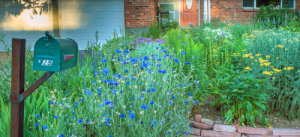
For those who don’t want to spend a lot of time selecting individual plants, Resource Central, a nonprofit based in Boulder, Colorado, offers assortment packages of water-wise plants called “Garden in a Box.” The packages are professionally designed and choices come in different sizes or color schemes, with packages better suited for expected levels of shade or sun. Resource Central estimates the program has saved 130 million gallons of water during its 20 years of existence – and the homeowner gains a plant palate worthy of the name Colorful Colorado.
“With a little inspiration from nature, you can learn a lot about what grows well in Colorado by going for a summer hike,” said Neal Lurie, President of Resource Central. “Plants and flowers that look good along a nearby open space trail will often look good in your yard without much water. A quick visit to the Garden In A Box website can also help you reimagine your yard and makes it easy to get started.”
Parts of the Plan
A quality water-saving yard plan should consider the seven Xeriscaping Principles. This piece has already touched on three of them – planning, plant selection, and deciding how much turf to keep (if any). Here are ultra-brief descriptions of the other principles:
- Soil: Evaluate your existing soil, for example to see if it’s too sandy or too clayey. Consider using soil amendments, such as organic compost, to craft that “just right” composition.
- Irrigation: “Engineer” your irrigation system to use water efficiently – only when it’s needed, only where it’s needed, and make sure it’s in good working order so you’re not wasting water through leaks and drips.
- Maintenance: Even if you use native plants, you should monitor their progress after planting to make sure they’re healthy and happy in their new home – and adjust accordingly if needed.
- Mulch: Mulching between plants will save water, and the organic matter will break down over time – enriching your soil. Mulch also generally looks better than bare ground, and can help keep weeding to a minimum.
Veggie Garden: Homegrown is Good
Yes, a yummy vegetable garden can be part of a xeriscaping plan, but again, planning is key and the Seven Principles provide good guidance. For illustration, Denver Water featured the story of a Park Hill family who replaced part of their turf yard with raised beds for veggies, and now uses significantly less water than they would with a full-turf lawn – while enjoying some of the freshest produce an urban dweller can obtain.
Water-wise gardeners should consider the following:
- Use water-efficient forms of irrigation, such as a drip line. Drip systems, when properly used, can be roughly 90 percent water-efficient since the water is distributed directly to the plants at ground level, compared to the typical 50 to 70 percent efficiency of a sprinkler system.
- Other simple ways of limiting water waste: use mulch between plants, place plants with similar watering needs near each other, and water in the early morning or evening when temps are cooler.
- Use soil amendments for water efficiency and proper plant nutrition.
- Irrigation systems can be simple or complex, and this webpage from the CSU Extension offers tips on mechanical aspects of given systems to maximize efficiency.
Hardscaping and Alt-Grasses
Of course, some landscaping plans might include areas with no plants at all. “Hardscaping” materials might include pavers, landscaping pebbles or gravel, or flagstone. While a homeowner could cut irrigation needs down to zero or near-zero by covering an entire yard, it may be preferable to only hardscape a portion. Hard materials can increase the soil temperature, they may prevent rainwater from seeping into the soil, and there’s no biodiversity without vegetation.
Homeowners may also consider alternatives to Kentucky bluegrass turf, including but not limited to buffalo grass, tall fescue, fine fescue, or African Dogtooth (also known as Dog Tuff). The alternatives can save significant amounts of water – for example, a buffalo grass – blue grama mix could require about a third the irrigation of Kentucky bluegrass. However, each type of turf has its own characteristics, including appearance, tolerance to sun or shade, development of weeds, or durability under high traffic, so people should do careful research before replacing one type of turf with another.
As you prepare to unearth your turf, water experts often tout the One-Third approach: use water-wise plants for one-third of the yard, hardscape for one-third, and keep the remaining third for turf, if needed for kids or pets.
There are nearly unlimited resources to help Coloradans do their part in conservation. Water, on the other hand, is a limited resource – so let’s do what it takes to minimize waste and live sustainably in our semi-arid climate!
By Richard Valenty

